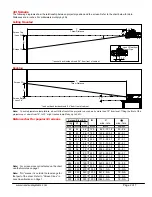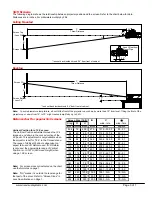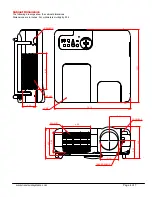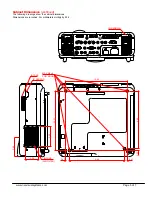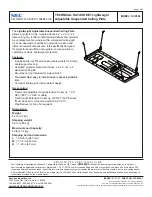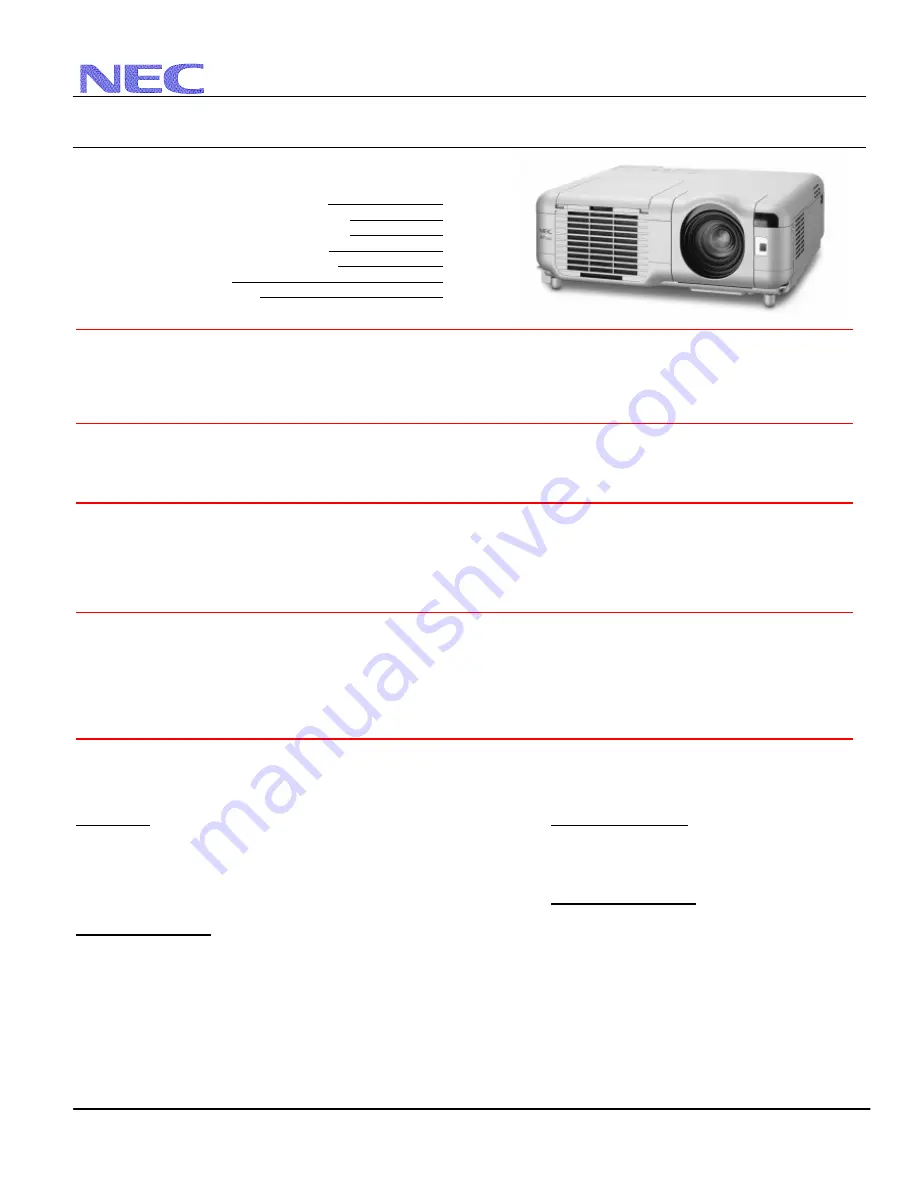
NEC
Solutions
(America),
Inc.
Visual Systems
MT1065/1075 Installation Guide
With Optional 2.7 - 4.2:1 Zoom Lens (MT60-26ZL)
v2.0
www.necvisualsystems.com
Page 1 of 7
Contents
Product Description, Lens Specs,
Screen/Aspect Ratio, Notes and Formulas
Pg. 1
Diagrams and Distance Charts, 4:3 Screens
Pg. 2
16:9 Screens
Pg. 3
Cabinet
Dimensions,
Top,
Front
and
Right
Pg. 4
Bottom,
Back
and
Left Pg. 5
Ceiling
Mount
Dimensions Pg. 6
Input
Panel
and
Control
Codes
Pg. 7
Product Description
Type:
3
panel
LCD
projector, Brightness: MT1065
w/MT60-26ZL:
2900
ANSI
lumens
1.0”
p-Si
TFT
w/MLA
MT1075
w/MT60-26ZL:
3500
ANSI
lumens
Resolution: 1024
x
768
(4:3)
Dimensions:
13.14”(W)
x
5.48”(H)
x
12.71”(D)
1024
x
576
(16:9)
Weight: 13.2
lbs
Lens Specifications
Throw Ratio: 2.7 - 4.2:1(for 100” diagonal)
Focal
Length:
53.8mm
–
82.9mm
Offset Angle: 5.1
°
-8.0
°
(for
100”
diagonal)
F/#: 2.04
–
2.80
Screen
Sizes:
40”-500”
Power
Zoom
/
Power
Focus
Screen/Aspect Ratio
Both 4:3 and 16:9 screens are fully supported
with proper aspect ratio control for both type sources using NEC developed
scaling technology. By selecting the screen type in the menus, Aspect Ratio control is reconfigured for that screen type.
•
For a 4:3 screen; select “4:3” in the “Screen” menu for proper aspect ratio control of 4:3 and 16:9 sources.
•
For a 16:9 screen; select “16:9” in the “Screen” menu for proper aspect ratio control of 4:3 and 16:9 sources.
*Factory default “Screen” setting is “4:3”.
Notes
For screen sizes not indicated on the projection charts, use the formulas below.
If a value in a chart does not match the results of the formulas, use the values in the chart.
The ceiling must be strong enough to support the projector and the installation must be in accordance with any local
building codes.
Distances are in inches, for millimeters multiply by 25.4.
Distances may vary
±
5%.
Formulas
The Projection Formulas use the image width for calculation. Image width is the same for all aspect ratios, only vertical image size
varies. For proper projector placement, determine the image width for a desired screen size. Use the Screen Formulas below to
calculate all screen dimensions. Plug in the image width for “W” in the Projection Formulas.
Refer to the diagrams and charts for popular screen sizes on page 2.
Definitions:
4:3 Screen Formulas:
W
=
Image
Width
W
= H x 4/3
H
=
Image
Height
(Size)
H
= W x 3/4
B
= Vertical distance between lens center and screen center
Screen Diagonal
= W x 5/4
C
= Throw distance
α
= Projection angle
16:9 Screen Formulas:
W
= H x 16/9
Projection Formulas:
H
= W x 9/16
B
=
0.375W
Screen Diagonal
= W x 18.358/16
C
(wide)
=
2.7264W
–
5.276
C
(tele) = 4.2864W – 5.354
Vertical Position for a 16:9 screen: The Vertical Position adjustment moves the 16:9
α
(wide) = tan
-1
(B/C(wide))
image up and down in the unused portion of the 4:3 panel. This adjustment is only
α
(tele) = tan
-1
(B/C(tele))
available when the projector is set for ‘16:9’ in the
‘
Screen’ menu. The range of Vertical
Position
is
dependent
on
aspect
ratio and 3D Reform used. If 3D Reform is not used,
the approximate range of Vertical
P
osition is +/-0.167H (H=Screen Height) when using
a 16:9 screen.
Note: To avoid premature lamp failure, do not tilt the front of the projector up or down by more than 75° from level. Tilting the front of the
projector up or down from 15° to 75° might reduce lamp life by up to 25%.


